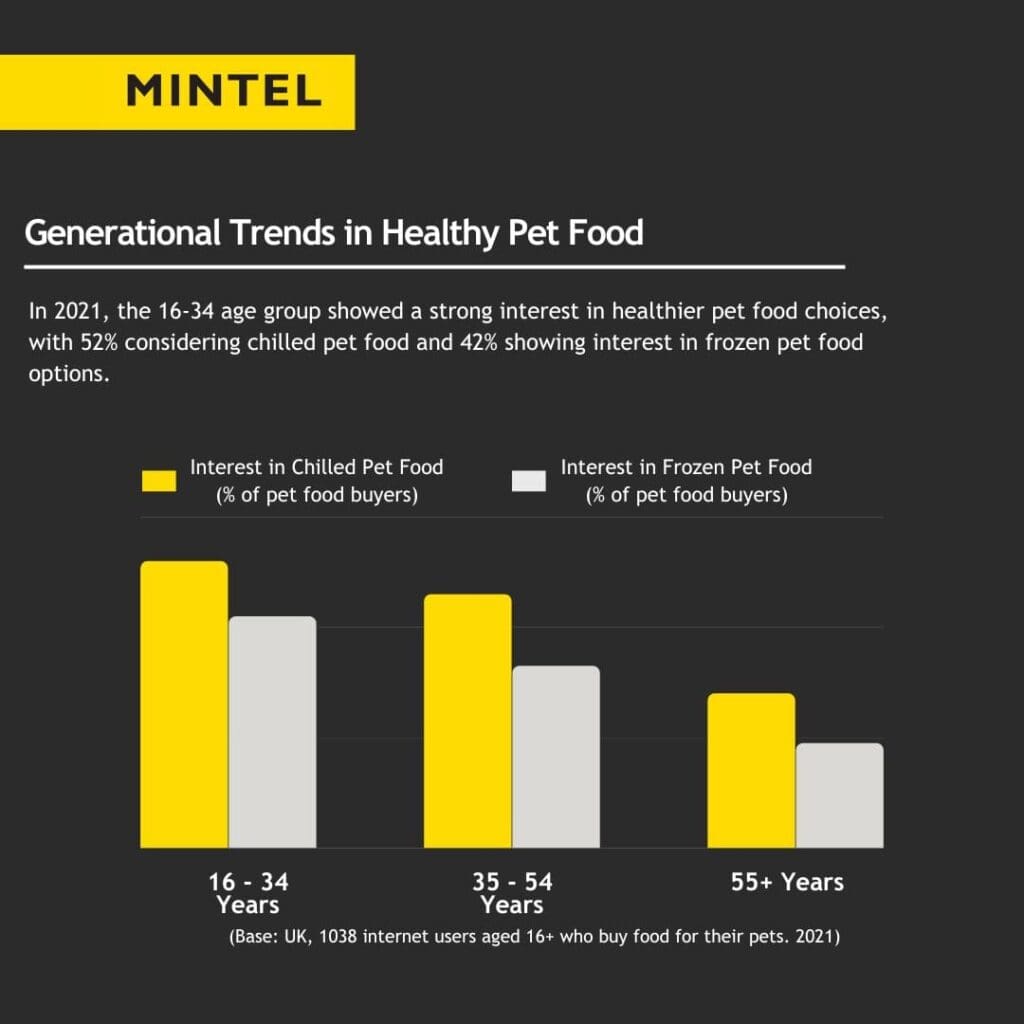For many of us, the experience of welcoming a pet into our lives is an incredibly happy one. As well as the instant boost to your mood from having a dog or cat to snuggle up with, it has long been suspected that pets help our mental and physical health. The relationship between us, as pet owners, and our pets is reciprocal – just as they benefit our health, owners aim to ensure that their pets are just as healthy. Within this article, Mintel explores how pets improve our health, and how we can prioritise our pets’ health in return.
How Pets Help Our Health
Many of us can testify to the positive impact of owning pets on our mental health. From acting as a tonic to loneliness in more isolated groups; to acting as a stress-reducing factor in our daily lives. There are plenty of ways that owning a cat or dog (or hamster, snail, fish, and more!) has been shown to improve mental health levels. To put it simply, having pets helps many of us to feel connected, relaxed, and calm.
The health benefits of owning a pet extends to our physical health too. Depending on the kind of pet you care for, activity levels are boosted and blood pressure levels are lowered. This can have a major impact on our own personal wellbeing, as taking regular exercise is viewed by more than half of people in the UK as crucial to healthy living. This may take the form of walking your dog every day. By having a regular routine of exercise included in your pet care responsibilities, we are more likely to hit our daily steps and enjoy regular exercise.
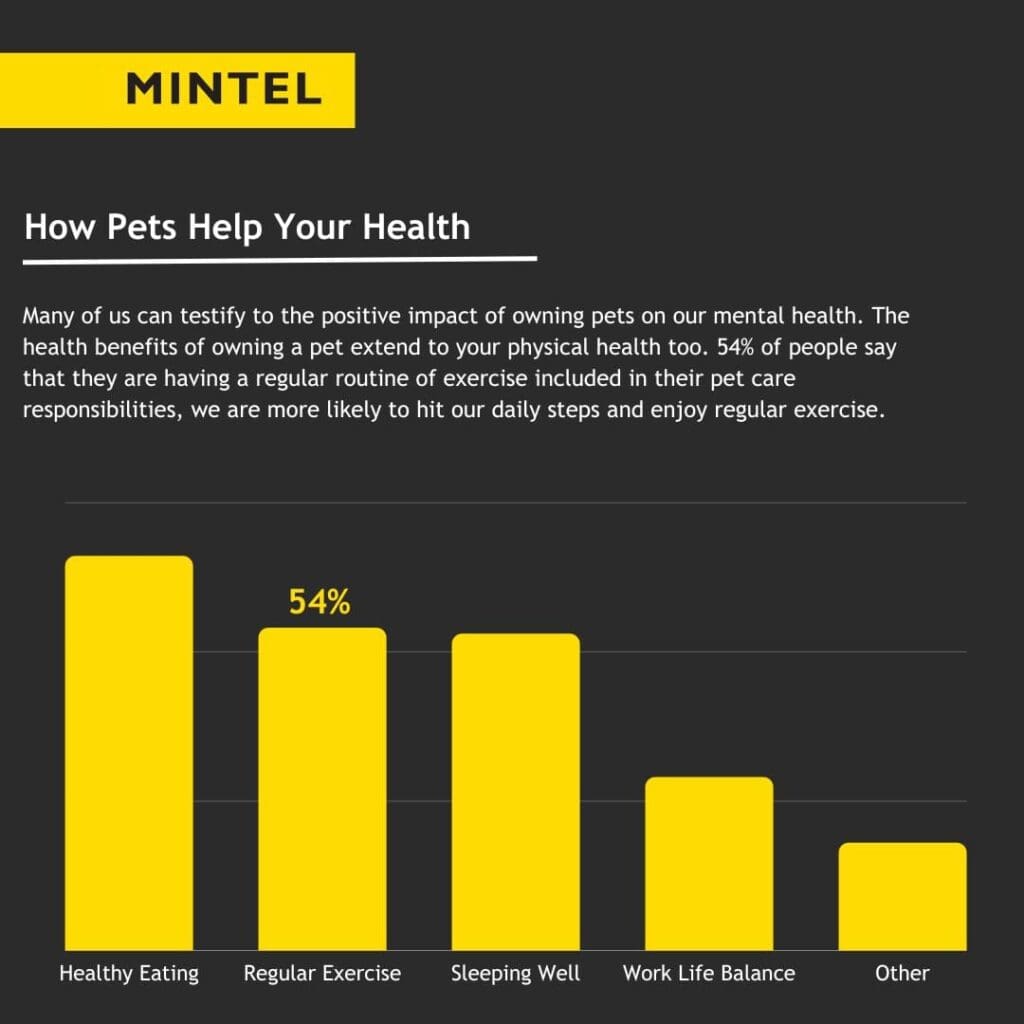
Prioritising Our Pets’ Health
So, we know that pets have a beneficial impact on our mental and physical health, but does this go the other way? In a recent Mintel report on the Future of Pet Food, our expert analysts have found that one of the features of pet food that keeps on growing in popularity is health consciousness. This shows us that the health of our pets is a key priority, and we value their health just as much as they impact ours.
A key way in which we are boosting and prioritising our pets’ health is by choosing healthier pet food options. Let’s examine this trend in a little more detail.
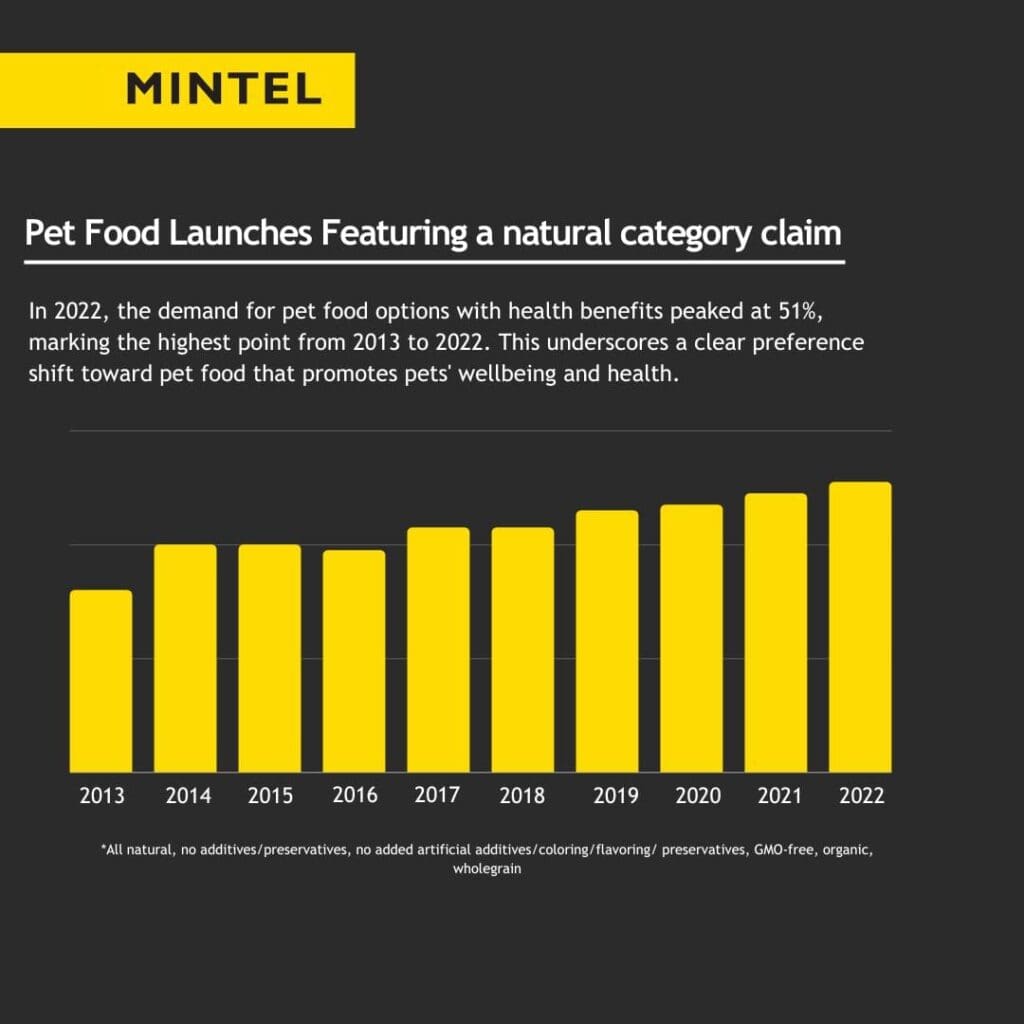
Source: mintel.com/products/gnpd
Growing Demand for Healthy Pet Food
Over the last few years, healthiness has become a much more significant factor for pet food consumers when choosing pet food options. In 2023, 60% of pet food buyers in the UK decide whether or not to purchase pet food based on how healthy it is. This is just one of the defining characteristics of the UK pet food market, about which you can learn more with Mintel’s pet food market report. This is reflected in how pet food brands are choosing to develop and market new products, with more than half of new launches in 2023 coming with health claims according to Mintel GNPD. This has significantly increased in the last decade, and we expect this trend to continue.
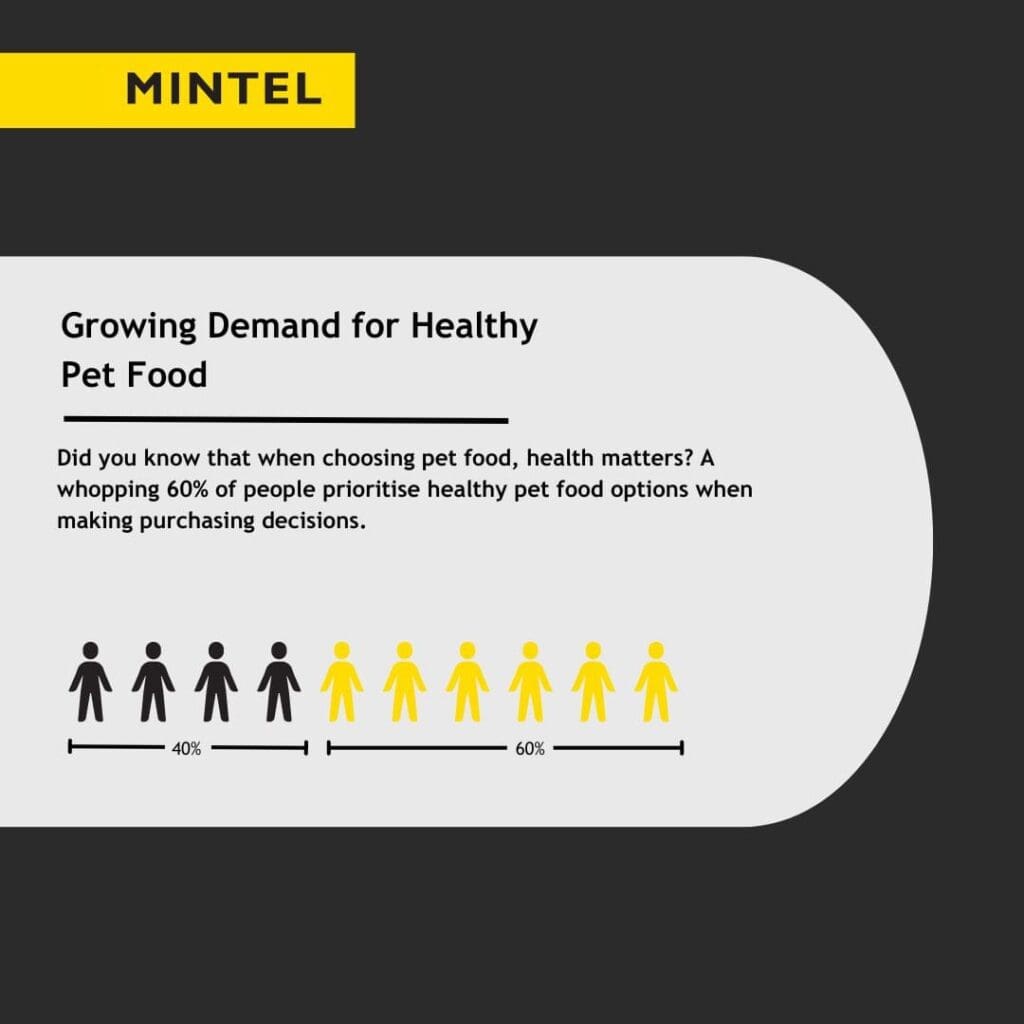
Cats vs Dogs: Whose Food is Healthier?
In 2022, around a third of US consumers cited improving their pets’ health and wellness as a reason to switch their pet’s food, with cat owners slightly ahead of dog owners in this respect. This looms large over consumers citing taste or price as a reason to switch, roughly a sixth of consumers doing so. For cat and dog owners alike, the primary impetus in switching pet food is health and wellness. However, this is slightly less important to dog owners, whereas palatability is more crucial for dogs than cats. For cat owners, saving money is slightly more important than for dog owners.
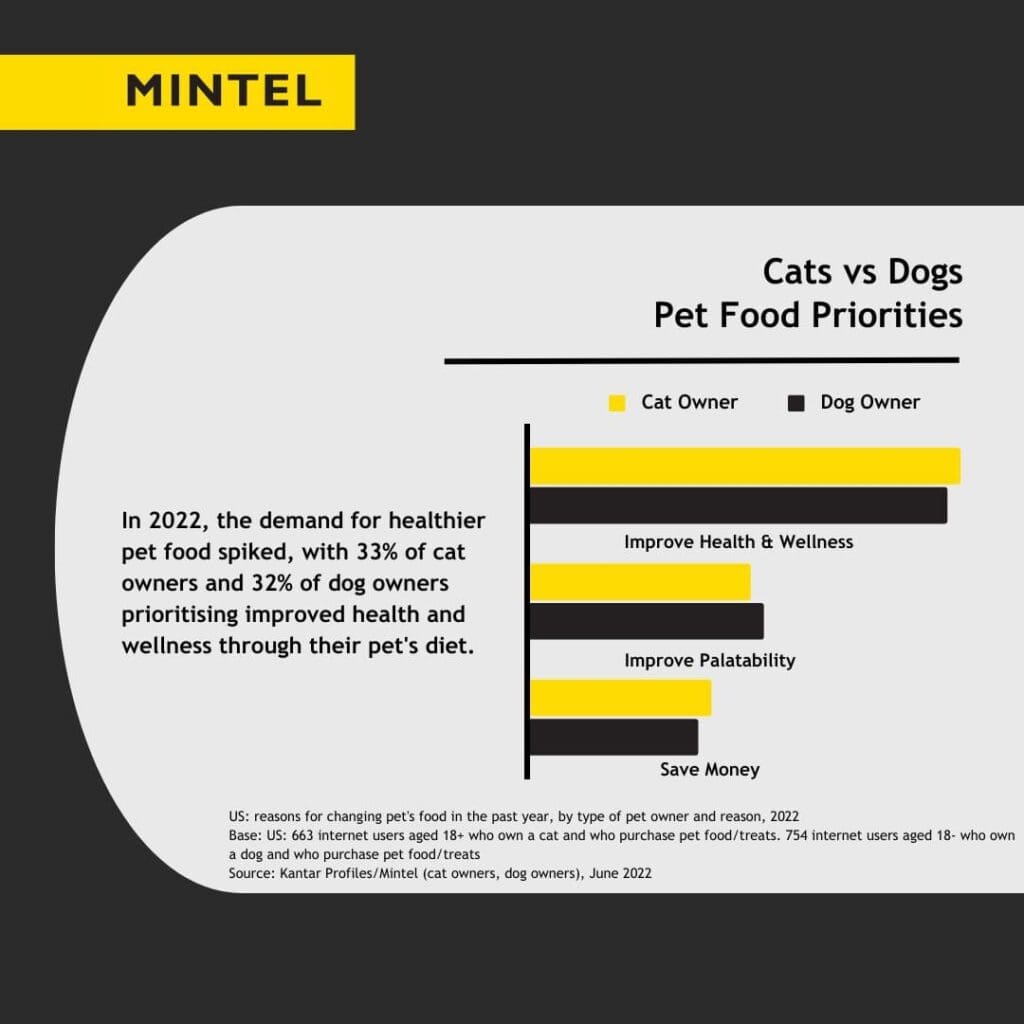
Emerging Options for Healthy Pet Food
Reflecting the growing consumer demand for healthier pet food options is the expanding variety of pet foods with health claims. A large portion of the market is willing to go the extra mile to secure these health benefits. A majority of UK food buyers stated they would be interested in a personalised meal plan to help their pet lose weight.
In previous years, insect protein emerged as a trending ingredient in pet food, but pet food consumers now seem to be particularly interested in how their pet food is preserved. One of the key emerging options in the pet food aisle is fresh, frozen, and homemade options that lean into this demand for bespoke, freshly prepared meals for our pets. In the US, frozen pet food saw double-digit growth in 2020-21, while over half of pet food buyers choose freshly prepared options as they perceive them to be healthier than store-bought pet foods. Back in 2016, Mintel predicted that chilled pet food would become a growing trend; a prediction which is now playing out in real time.
Generational Trends in Healthy Pet Food
It is clear that pet food consumers are increasingly leaning towards the healthiest pet food options, which is particularly true of younger generations. In the UK, there is a disparity between the adult average and young adults when it comes to the perception of homemade food as more natural, and therefore a better option. Additionally, pet food consumers aged 16-34 more significantly represent interest in chilled and frozen pet food, far outweighing their older counterparts in this market.
What We Think
In recent years, we have seen a shift in consumer focus towards healthy options for their pets, which has included an enormous growth in chilled and frozen pet food varieties in both the UK and the US. This change is most significant among younger pet owners, but is clear across the board.
In the next couple of years, we forecast that bespoke pet foods for individual cats and dogs, designed specifically for their health needs, will become more and more popular. With pets representing a more significant role in our lives, our willingness to prioritise and budget for their health needs will be bolstered. We can expect to see a continuation in the prioritisation of pet health along with a focus on sustainability and ethical consumption.
To find out more about the pet food industry, you can explore Mintel market research on how pets impact on our lifestyles.
